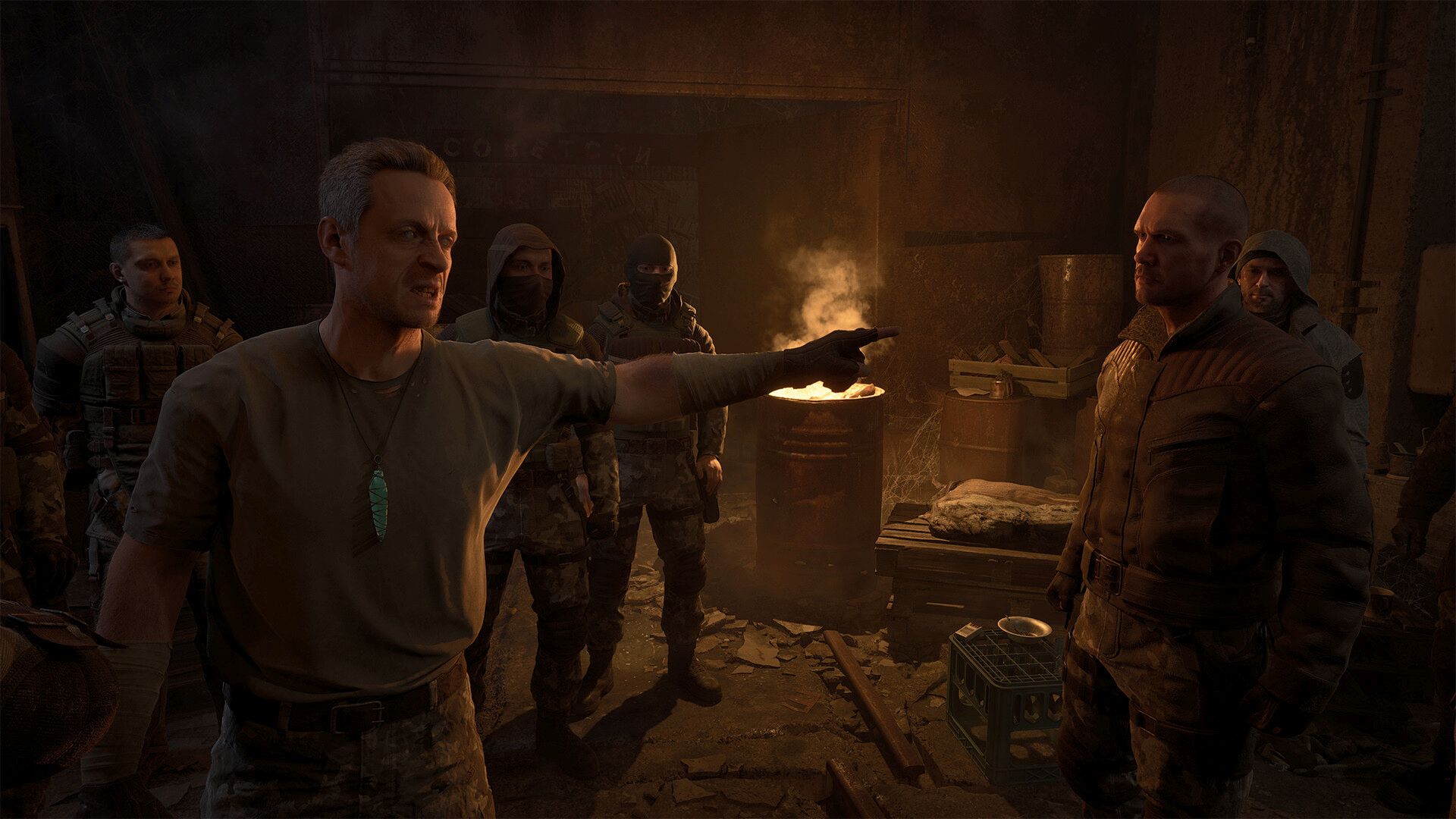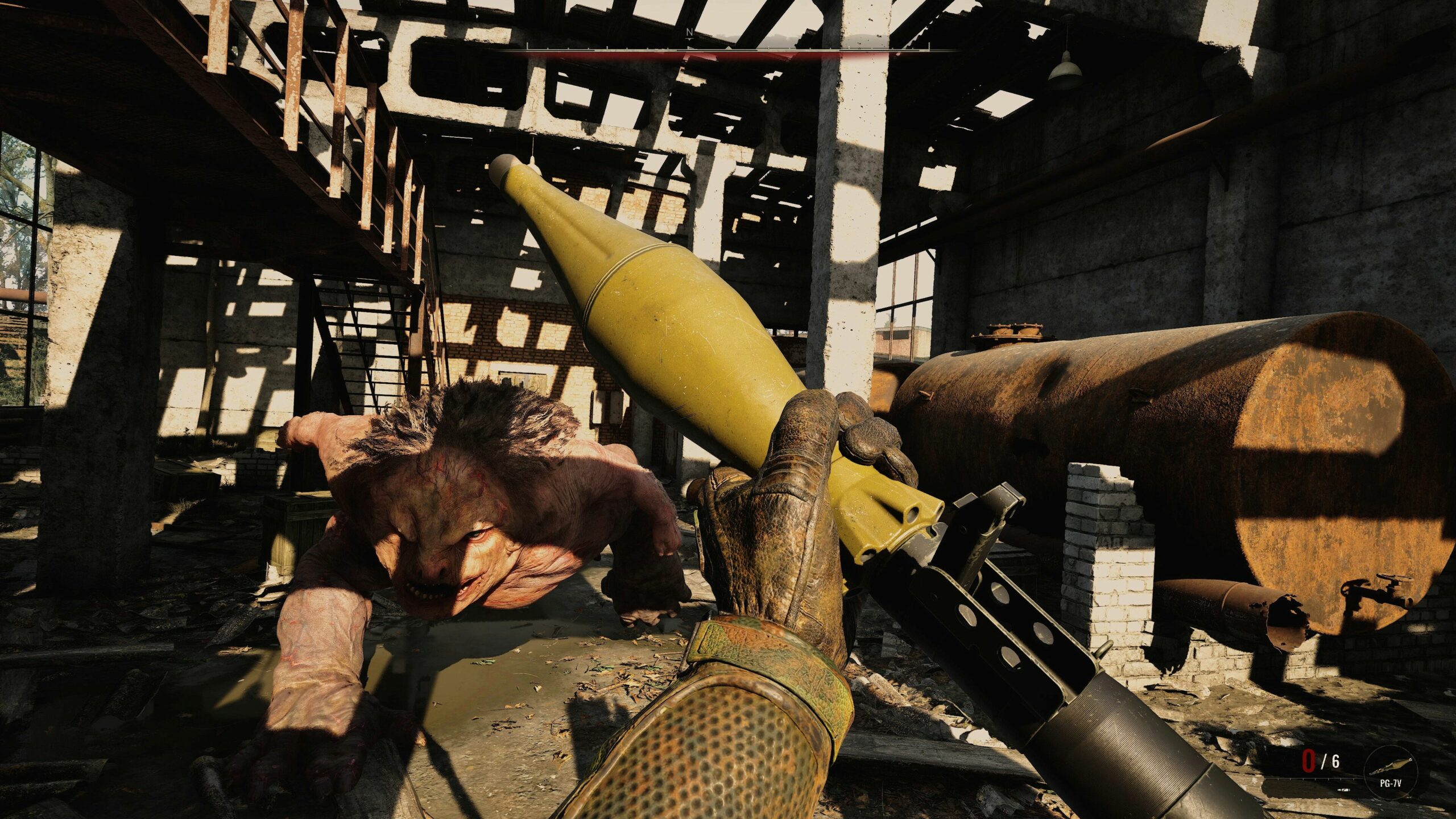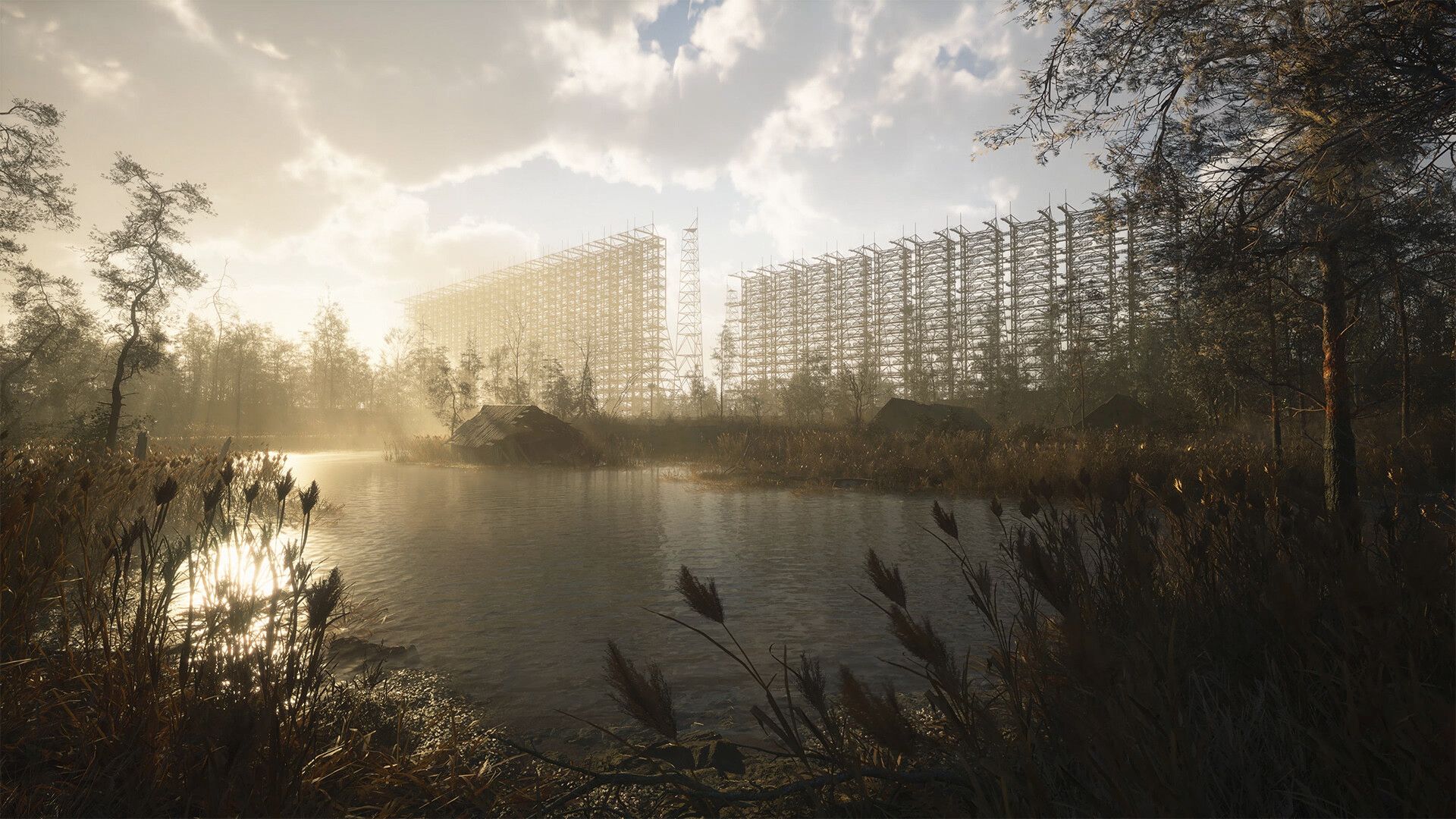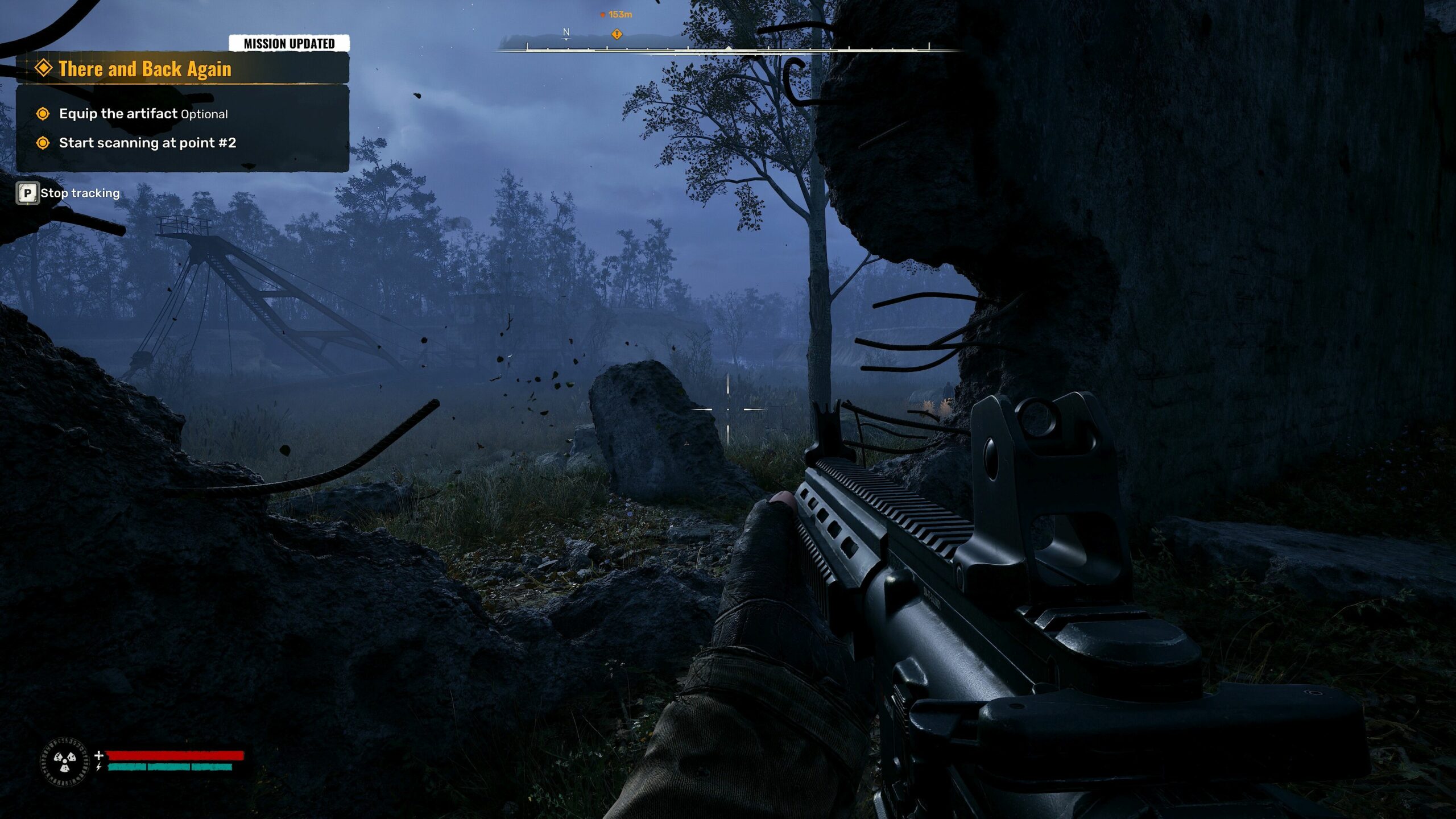S.T.A.L.K.E.R. 2: Heart of Chornobyl review
Note: some of this review was written before a Day 1 patch addressed over 1100 bugs and issues. The patch was over 138 gigs, nearly as large as the base game. While the pre-patch review version wasn’t entirely unplayable, it could be very frustrating. Of course, while every issue has probably not been addressed, the experience now is vastly improved and closer to what S.T.A.L.K.E.R. 2 is trying to be.
I appreciate ambition. Whether it’s in game design, the arts or technology, I like it when creators think big and outside their limits. Swinging for fences can be exciting even when the end product comes up short. On the other hand, no matter how ambitious the product, consumers should expect value and competence for their money. S.T.A.L.K.E.R 2: Heart of Chornobyl is a far more ambitious game than its predecessors in the franchise, but technically rough around the edges. This is not unexpected. In fact, there will be legions of fans ready to embrace the game’s jank. For some, it’s part of the charm and potential.
Miracle of Miracles
Given the rocky road to getting the game out the door, it’s a minor miracle that S.T.A.L.K.E.R. 2 exists at all. The game was first announced in 2011, but stalled by financial and personnel issues not long after. By 2019, GSC Game World re-formed. S.T.A.L.K.E.R. 2 was announced as being back on track using the Unreal 5 engine. A trailer revealed the game in 2021. Then, Russia invaded Ukraine, and GSC Game World had to relocate its studio to the Czech Republic and re-do a lot of the game’s motion capture and other assets. It’s hard not to acknowledge the tremendous personal and professional struggles that the developer endured over the past few years. Ultimately, of course, that backstory is less important than whether the game is fun.
The S.T.A.L.K.E.R. games have a very large and passionate fan base who love the setting, characters and mechanics. The games are based on an alternative history. The meltdown of the Chornobyl nuclear power plant – and a subsequent, second event in 2006 – created an Exclusion Zone filled with irradiated landscapes, mutant animals and space time anomalies filled with powerful artifacts. You play as a S.T.A.L.K.E.R., a survivor that gets by though scavenging, trespassing, adventuring, looting, killing, exploring and robbing (hence the acronym). In other words, whatever needs doing, you can do it.

And then You Die
Unlike the prior games, S.T.A.L.K.E.R 2 is set in 60km²+ open world. It’s a haunted, deadly landscape filled with derelict buildings, survivor camps, various warring factions, supernatural entities, monsters and mutants. Largely geographically authentic to the actual Exclusion Zone, GSC Game World has built an impressively large, detailed and extremely dynamic world. The day and night cycle, changing weather and supernatural storms create a landscape that is genuinely interesting and terrifying to explore. Much of it is interactive.
You play as Skif, a S.T.A.L.K.E.R that is initially sent out to collect artifacts from shimmering, deadly anomalies. From that first assignment, the main story mission follows a loose set of main objectives that bring you to the Scientific Institute for the Research of the Anomalous Area. As the story progresses, the intrigue, narrative complications and ethical dilemmas start to pile up. The story isn’t bad, but like many open-world RPGs, a lot of fun comes from freely exploring.

Not unlike prior games, S.T.A.L.K.E.R 2’s basic gameplay loop consists of scavenging for supplies, world exploration and completing the main narrative quests and dozens of optional side quests. Of course, all of these elements are based on simply surviving time in the Zone. S.T.A.L.K.E.R 2 is as much a hardcore survival game as it is a first person shooter. There’s no crafting. All weapon repairs and upgrades need a technician, and you’re not cobbling together IEDs or consumables from dog bones and radioactive apples. In addition to weapons, players hunt for supernatural artifacts. These add perks or passive abilities but always have a negative effect too. The Zone giveth and taketh away.
Looking for Quality of Life
Except at the easiest difficulty, S.T.A.L.K.E.R 2 is a brutally difficult game, which I suspect is exactly what fans want. But for many players, this is where we shift from describing an impressively crafted world filled with danger and interesting NPCs to being frustrated with a number of intentional design decisions. Most of these are there to add immersion or challenge, like guns that jam or need constant repair. Add to the list limited ammo and healing items, near-constant attention to hunger, bleeding out from even minor wounds, radiation exposure and instant death that can come from unseen enemies, packs of dogs, mutant monsters or falling. S.T.A.L.K.E.R 2 does not hold the player’s hand. In fact every time the player reaches a hand out for help, the game gleefully slaps it away.
S.T.A.L.K.E.R 2’s map is very large. There are no driveable vehicles and only a costly, guided version of fast travel. Meaning, you will be covering vast distances on foot most of the time. That’s great for exploring and potentially stumbling on side missions, but a drain on resources and time if all you want to do is progress the story. The game doesn’t pause when you open the mini map on your tablet, leaving you open to attack. The UI compass is a mix of necessity and poor implementation.
Kudos to GDC Game World for crafting an impressively realized environment, but the visuals are undercut by somewhat anemic audio and weapon sounds. Voice acting, character animations and writing range from acceptable to awkward, at least in English. The sounds of the world — wind, electrical storms, rain, etc — often obscure important audio cues in combat. Although the mega-patch has fixed some problems, other issues remain with the sound design.
Off-Balance
I enjoy difficult games, but there are moments where S.T.A.L.K.E.R 2 doesn’t play fair. Death arrived too many times by dogs or mutants that literally appeared out of nowhere, with no visual or audio cues to alert me. I was sniped from halfway across the map or killed by enemies with the ability to see through walls. Most enemies were bullet sponges, while I was absolutely not. There were more than a few dialogue sequences that had no way out except by dying. Do I want a story-mode level of challenge? No, just a bit more balance and fairness.
But I’ll give credit where it’s due. GSC Game World got this big, ambitious game out the door despite a lot of significant challenges. And while the experience can be bumpy, there a lot of options for dialing in difficulty and graphics settings to help smooth out performance. A few more patches and mods down the line and S.T.A.L.K.E.R 2 still won’t be for everybody, but it’ll be the best at what it does.

Fans of the S.T.A.L.K.E.R franchise expect uncompromising action and are largely immune to the series’ rough edges. For them, S.T.A.L.K.E.R 2 delivers, adding a vast open world filled with danger and discovery. The release day patch fixed many big issues, but the game still needs serious additional polish. Some casual shooter fans might be put off by S.T.A.L.K.E.R 2’s difficulty and opacity, but players who have patiently waited for S.T.A.L.K.E.R 2 will be pleased.
***PC code provided by the publisher for review***
The Good
- Impressive open world
- Lots of freedom
- Very challenging
- Interesting story
The Bad
- Very challenging
- Lots of bugs
- Can be frustrating and opaque
- Bland writing and acting

